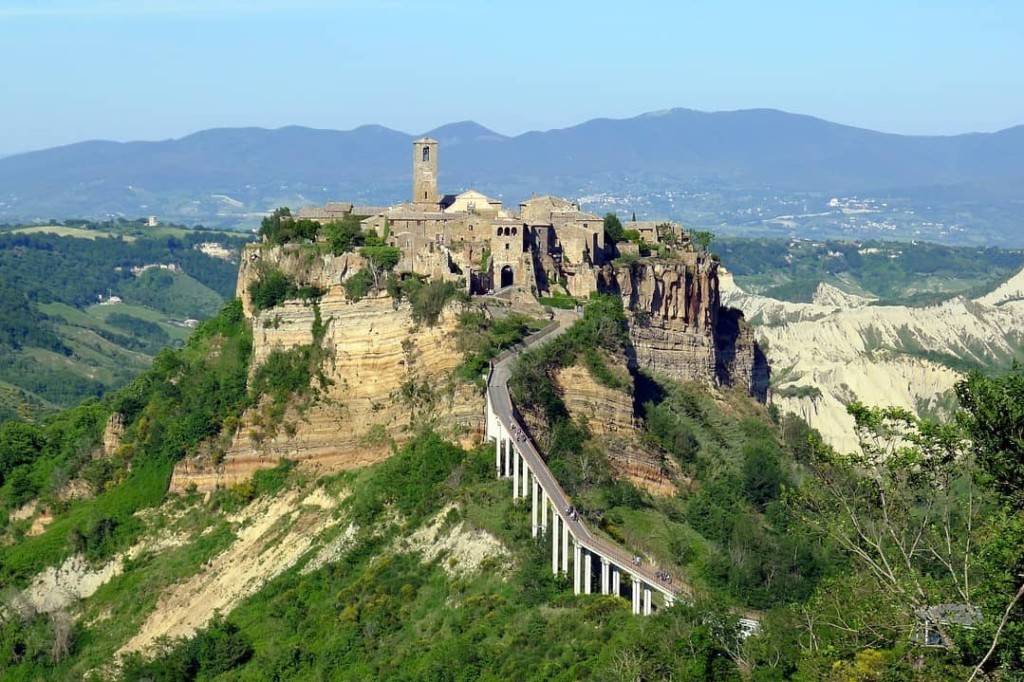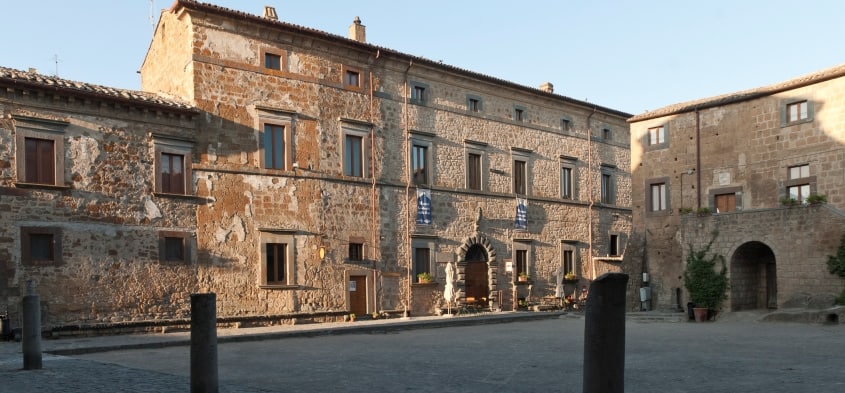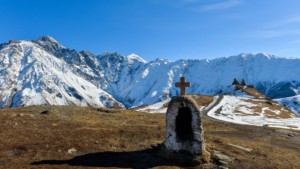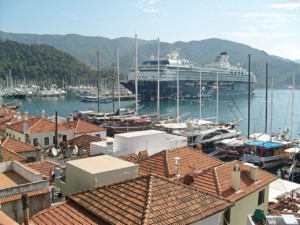Civita di Bagnoregio, the tourism town on the edge of extinction

Signposted as “Civita, The Town That Is Dying”, the village is located in the Lazio region, 120 km north of Rome. Aside from its picture-postcard aesthetic, which it shares with other hill towns that don’t charge entry fees, the “last chance” factor may be the big reason for Civita’s popularity.
At the town’s Geological Museum of Landslides, maps and exhibits show how the volcanic rock Civita sits upon has gradually slipped away since the ancient Etruscans first settled there two-and-a-half-millennia ago.
Geologist Luca Costantini reckons Civita’s big decline began with a strong earthquake in 1695, when it was home to about 3,000 people. Since then up to 20 landslides a year have chipped away at it.
Now Civita is a permanent home to just 10 people. (Others own summer residences.)
One of the full-time residents is an American who laments “the masses of people who come on weekends, and the noise and confusion”. Of the residents, “some are profiting from it, but not everybody. And the very reason some people came here was to get away from this.”
Yet the tourist toll (~US$3.50 on weekdays; ~US$6 on weekends) pays for the continual restoration of the town, makes possible the elimination of local taxes, and has helped to stimulate full employment in the region.
The fees also likely pay for the Museum whose manifesto on how to save Civita suggests it won’t be cheap:
In order to find definitive solutions, measures taken to consolidate the slopes must be properly calibrated against the intense dynamics of a such problematic territory.
It is unreasonable to keep on intervening only when an event occurs, acting in emergency, circumscribing the intervention exclusively on the area of interest and not involving the whole slope and, moreover, not taking into account all of the general problems of instability that affect Civita di Bagnoregio.
It is fundamental to control the area day by day to prevent any worsening and spread of such phenomena: only by monitoring the whole area with focused strategies and adequate tools the instrument data can be collected, required to plan the priorities and characteristics of the operations to be performed on the slopes and to PREVENT the spread and worsening of the instability.

The Palazzo Alemanni in Civita de Bagnoregio houses the Museum.
More pleasing perhaps for the American is that Civita di Bagnoregio may be required by UNESCO to cut back on visitor numbers. This is because the town is a candidate for World Heritage Site listing. All other things being equal this will mean for tourists either higher prices or waiting lists, which should make everyone happier … except those who can’t afford it or don’t want to wait.
Sources: Based on a feature story by NPR. Please read it. Also the Museo Geologico e delle Frane, Civita di Bagnoregio.
Featured image: Civita di Bagnoregio. By evondue via Pixabay.
Related posts





